View current page
...more recent posts
"Jeanne-Claude, your design is good, but it needs color to have impact."
"We've done pink."
"And an incredible pink it was."
"I know........."
"What are you thinking, Christo?"
"It's daring."
"Try me."
"You'll laugh."
"I never laugh at your ideas."
"I'm thinking.....Orange!"
"Orange."
"Yes. Orange."
"My God. But wait...didn't we do orange?"
"Mon cheri, you're right. How could I forget Valley Curtain [Rifle, Colorado 1970-72]? All right, no matter, this time instead of orange we'll call it 'saffron.'"
Updated based on some assiduous Christo scholarship from Dan.
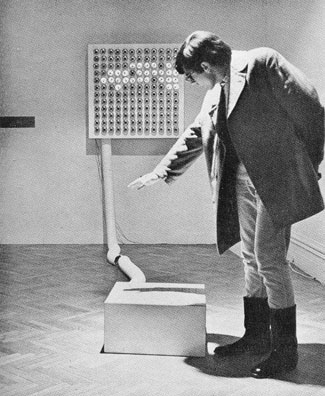
Juan Downey and Fred Pitts, Against Shadows, 1968, plywood, Formica, and electronic parts (photo by Shunk-Kender from Frank J. Malina's Kinetic Art: Theory and Practice, 1974). It's as simple as it looks: a grid of photocells on the formica cube responds to shadows and mimics them in reverse on the wall screen. The klutziness of it (e.g., that huge conduit) is, I believe, intentional. Downey's conceptualist-style statement for the work is still refreshing:
"If the choice were given to me, I would pick complete inaction for my entire life. Nevertheless, I persist in the activity of building electronic sculptures because:
Their existence or destruction is irrelevant to the life of them.Such a contrast with the Whitney's "BitStreams" show, where all the art had to have a purpose, and/or the curator killed it with pedantic overexplanation.
They cause people to play.
They make people aware of the vast number of different kinds of energy in the universe.
They are ephemeral. This is part of a new development in the history of art: to create works that are not supposed to last for a long time.
They pose a problem for the collectors of art objects.
They create the illusion that the public can participate in the work of art. Actually we are still spectators mystified by the order that makes the world grow and move, although, we pretend we are determining what happens to us.
It is fun to talk with friends about them.
They imitate aspects of movement in life. Art is more concerned with thinking about what people experience than with producing objects.
They make people aware of lively relations between different kinds of things.
Children like them.
Sometimes they produce a reversal of natural phenomena, for example, as demonstrated by the sculpture Against Shadows."
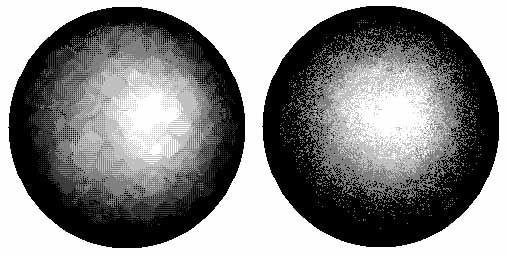
MSPaintbrush vs. MSPaint: A Refresher
Some kid out there on the internet mentioned my artwork and told his readers that I "apparently use MSPaint." In context, the "apparently" reads like a slightly disdainful qualifier, as in, "I can't see it myself, and in any case I don't think it's a particularly great use of MSPaint, but that's what the guy says--I'm just telling you." Of course I don't share the ambivalent feelings but do think it's time to trot out an earlier post where I explained the difference between MSPaintbrush (which rules) and MSPaint (which I use occasionally even though it's inferior).
Regarding the orange things going up in Central Park: The collective vanity of "Christo and Jeanne-Claude" is bottomless. Perhaps their only value as artists is exposing and exploiting weaknesses in "the system" that allows projects such as theirs to happen. It would be nice to think they were ironic, and knew the physical art was just fodder for a Hans Haacke-like provocation. No such luck, though.
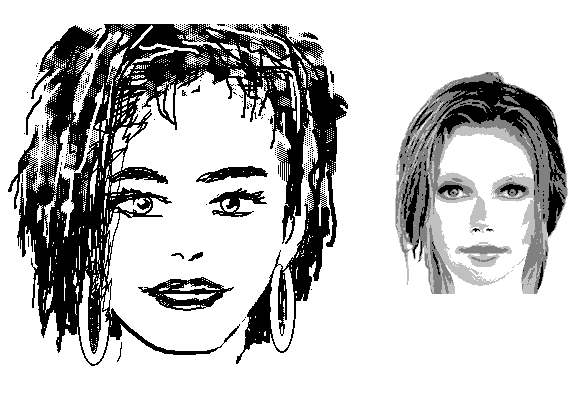
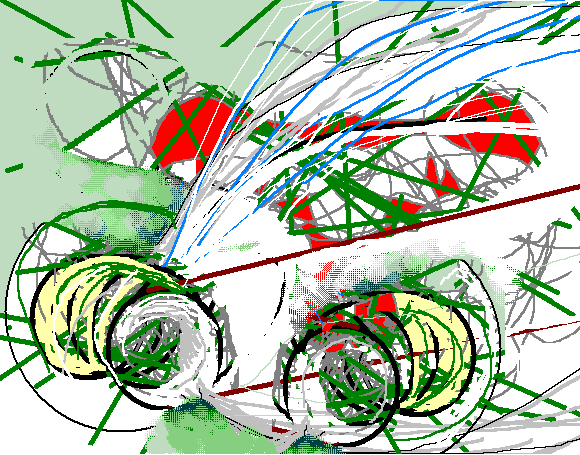
Bug7, MSPaintbrush
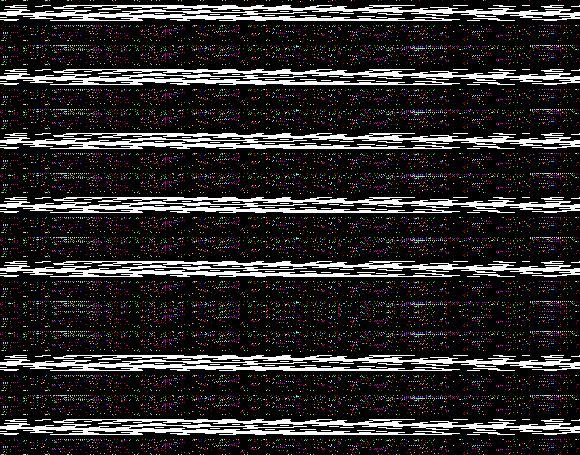
Surge Drawing (Black Stripes), MSPaintbrush
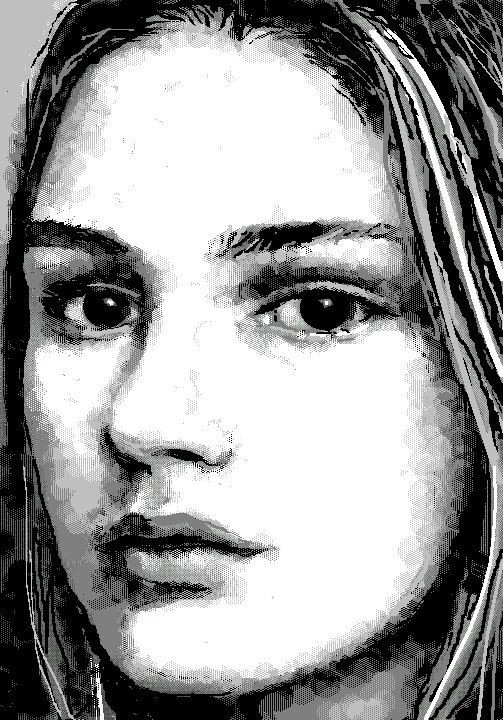
New York Times Ad Model (2002), MSPaintbrush drawing
